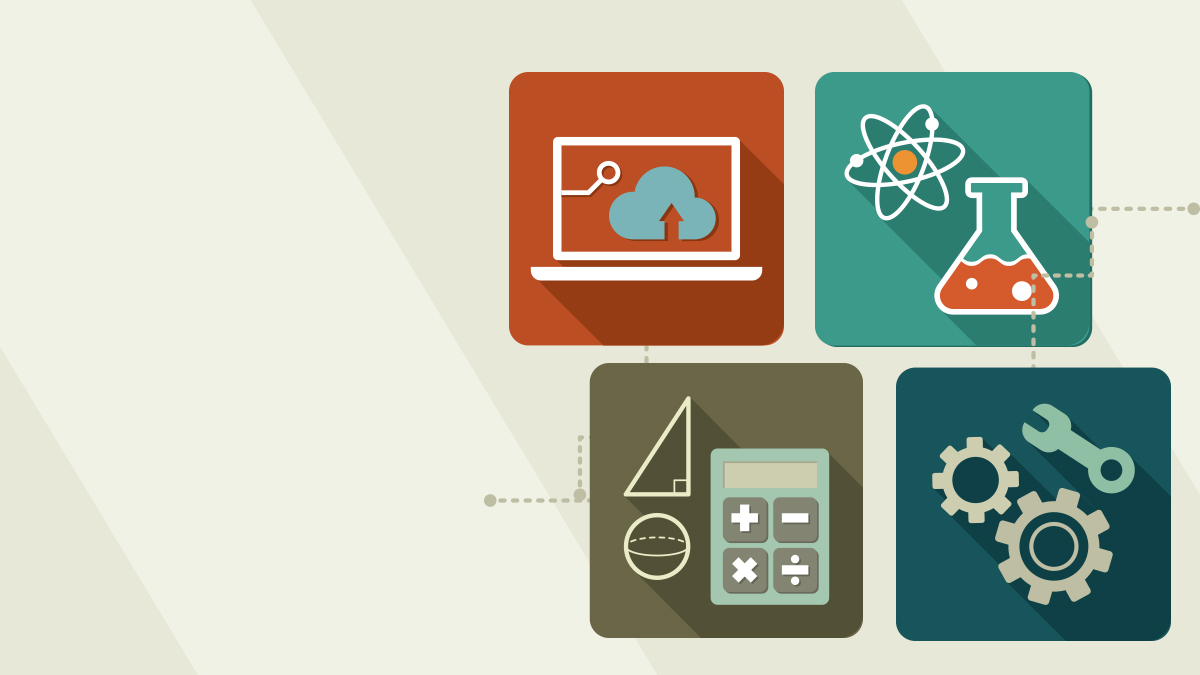Unpacking the STEM Disciplines
A project on human impacts on the environment provides many opportunity to explore the disciplines of STEM.
STEM is a commonly used acronym in today’s education world. Parents hear the term and hope their child’s school will be embracing it, teachers plan units encompassing it, even those outside the education realm have heard it and think it is important. But, do students actually understand the four disciplines and can they clearly express what they are learning about: Science, Technology, Engineering, or Math? Through this unit developed for an upper elementary classroom, students are guided through the four STEM disciplines in a personalized learning experience about the general theme of humans’ impacts on Earth and a specific place-based project on the use and disposal of plastic water bottles in the school.
My love for teaching and learning, the need to align curriculum with Next Generation Science Standards (NGSS Lead States 2013), recently adopted state standards, and my interest in STEM motivated me to combine all of these into a unit using the 5E Model. I realized that the unit would help students gain a deeper understanding of both the STEM disciplines and humans’ impact on the environment. This unit was developed as a companion to the guest editorial by Rodger Bybee (p. 8). Teachers can utilize this unit to gain a more in-depth understanding of the STEM disciplines in efforts to use them more naturally within the classroom setting. In addition to the guest editorial, an article titled Plastic Pollution to Solution (Kitagawa, Pombo, and Davis 2018) provided ideas I used in developing this unit.
Engaging the Students
As I began to introduce this unit, student discussions led me to realize that my students were already aware of various ways our Earth is changing. I first posed the following question to my class of 27 students in a diversely populated school in San Diego, “How do we know that humans have an impact on the Earth?” Students eagerly chatted in table groups and came up with many ideas such as: the drought and fires in California, rising ocean temperatures, opening a new dump near their neighborhood, increased trash at the beach, polluted air from cars, the list continued.
Next, I showed them a video of the Great Pacific Garbage Patch (see Internet Resources). I thought their discussion was rich prior to this video, but I was blown away by the deliberation after the video! Even the students that had been previously exposed to pictures or videos of The Great Pacific Garbage Patch were very engaged in discussing the amount of trash in our oceans.
I asked them to form small groups to discuss “What are current problems with our Earth today that humans have an impact on?” They discussed the question and researched using their iPads to look for hard evidence of these problems, including statistics, graphs, or numbers that proved that humans are impacting the Earth. The groups’ chosen representatives (scribes) presented their groups’ initial findings to the class. I concluded the lesson by asking them to share today’s discussions with their families, as we would expand upon it in upcoming lessons.
Exploring STEM and Human Impact
The next day, students’ energy was high and multiple students approached me first thing asking if they could do a project to help begin a positive change. That was exactly what I was planning for upcoming lessons! However, we needed to investigate their initial ideas about STEM to build a solid foundation before we approached solutions about the human impact in a meaningful context.
I provided each student with a STEM template (Figure 1) and asked them to converse with their table group about what components of studying The Great Pacific Garbage Patch might be under the lens of Science, what might be Technology, what is considered Engineering, and separately what could be Mathematics. Their answers varied to say the least. As I worked with table groups and individual students, I was able to use their first responses as a brief formative assessment to determine their level of understanding of the four disciples. I posed questions such as: What do scientists do? What do engineers do? Many of their ideas were very general, such as scientists do experiments, technologists improve electronics, engineers build things, and mathematicians work with numbers. This student feedback was the perfect place to begin and allowed me to decipher their level of current knowledge and therefore where our conversation would begin in the explain phase.
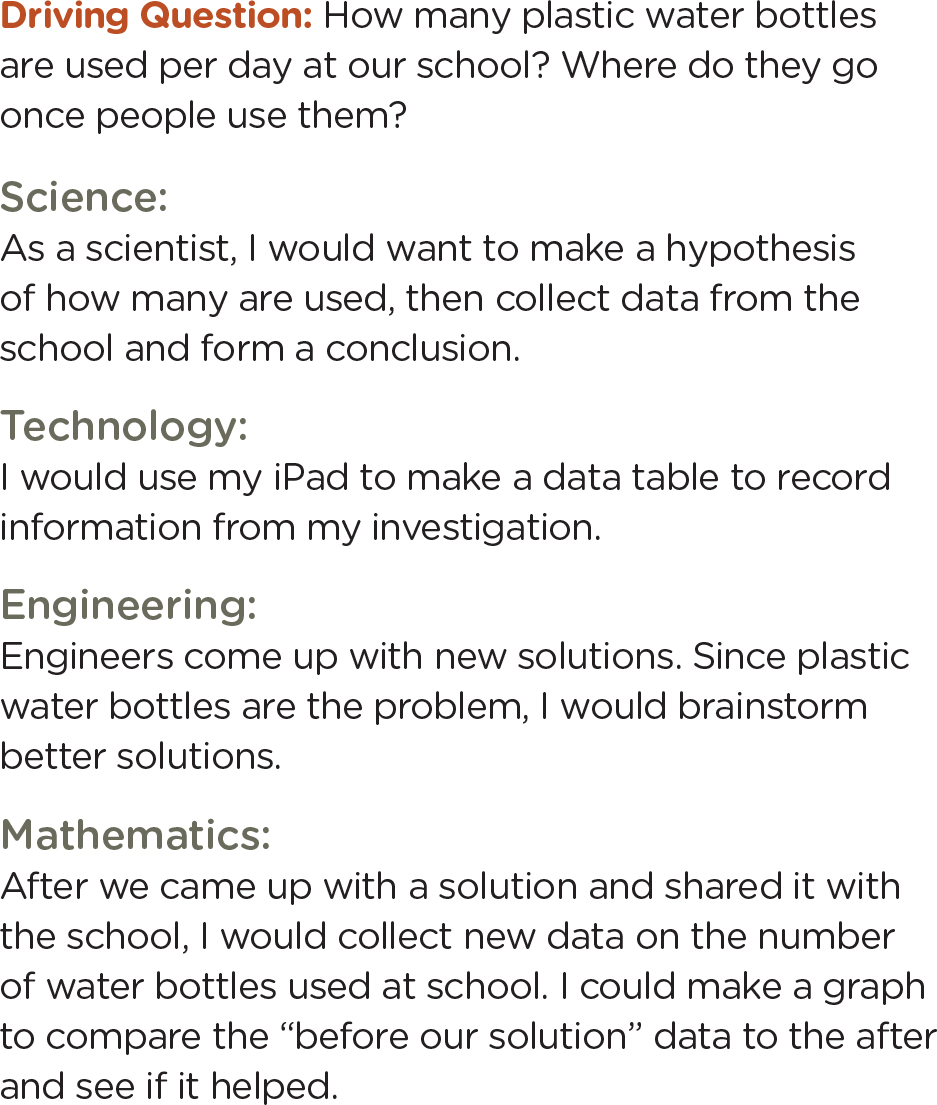
We re-watched yesterday’s video to refresh their memory with a new lens on STEM and they pulled out ideas, below I have listed what the students identified. Like any classroom, their replies varied on the spectrum of understanding, and those listed include some of the best. Some students were not to this level of understanding, yet!
Science: the ocean currents, sampling of the plastic to see what was in there
Technology: the motor behind the trash puller, computer monitors that are dropped of shipping container boats
Engineering: the plastic contraption to pull the trash and the container to hold it
Mathematics: number of pounds of trash, relationship of the space the plastic island takes up to the size of Texas, percent of size of Pacific Ocean
We added these ideas to a class chart, had table group discussion to expand upon them, and then referred to them to begin the next lesson.
Explaining the STEM Disciplines
There was no doubt, students were hooked on finding a way to make a positive impact by starting at our school. I polled the class and asked them to add ideas of problems in our school that we could investigate and change to a Padlet, an online word wall for collaboration. Most of their ideas were incredible: leaky drink fountains, producing a lot of waste daily, air conditioning temperatures are too low and thus wasteful, using paper towels in bathrooms, use of too many plastic water bottles, wasting food, and so on. We took a vote to determine one issue that we could investigate as a class and decided our class project would be based on plastic water bottle usage.
Our first step was to refer back to the STEM disciplines from the prior lesson and discuss how a professional in each discipline would attack this problem. They began by determining the wording of our driving questions, “How many plastic water bottles are used per day at our school?” And, “What happens to the plastic water bottles?” I asked:
“If you were a scientist what would you need to know about our school’s plastic bottle use?”
“What if you were a technologist and wanted to find a solution, how might you think about this problem?”
“How would you think about the problem if you were an Engineer?”
“As a mathematician, what would you analyze so you know when positive changes occurred?”
They used a clean copy of the same template from yesterday and began completing it. For example:
Science: Collecting data to know how many plastic water bottles are brought to school. Here they discussed what counts as a plastic water bottle, what if it was reused, what about the ones used in the school kitchen?
Technology: iPad to record data
Engineering: designing a solution to help reduce the number of plastic water bottles used at our school daily
Mathematics: Graphs to display the data about the number of plastic water bottles, create comparisons of beginning numbers compared to after the solution is put into place.
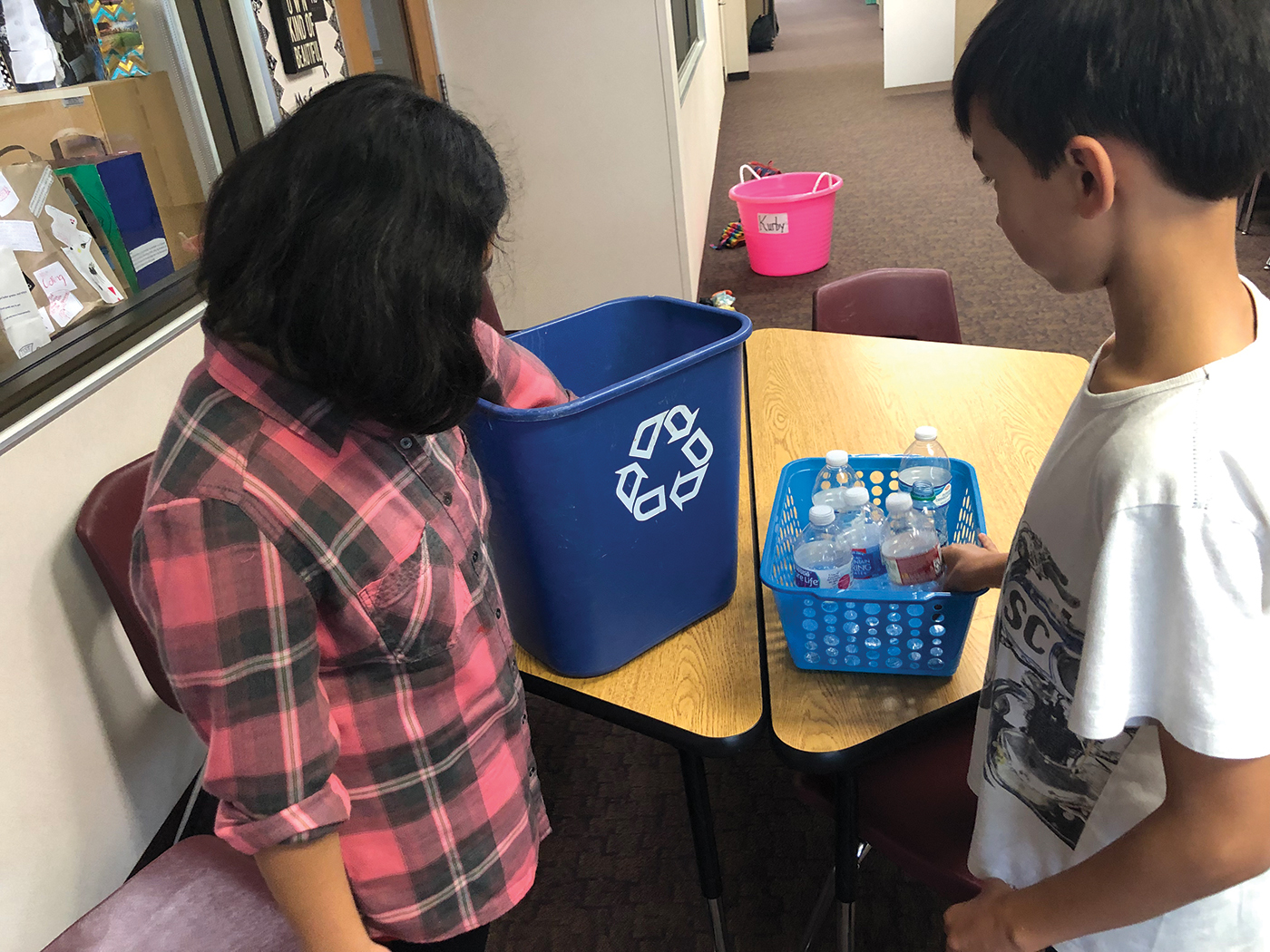
I paused the class and pulled them back together to clarify definitions of the four STEM disciplines based on definitions (NRC 2014). I projected the definition of science, “a body of knowledge about the natural world that is based on evidence.” In efforts to make the complexity of this project accessible to all students, I gave them an example that they could relate to and had past experience with in younger grade levels. My example was of a student scientist investigating the growth of flowers. The student had a question “How can I grow the tallest flower in two weeks by varying the amount of sunlight?” She investigated by giving each plant the same amount of water daily, but one plant got three hours of sunlight, one got five hours of sunlight, and one got zero. By the end of the two weeks, the flower with five hours of daily sunlight was the tallest. This investigation about a naturally growing plant showed a possible causeand-effect relationship and a likely answer to the question of the investigation.
Next, I added a definition of technology: “human-made tools and ideas to meet needs and wants, not just computers and communication devices.” In our flower scenario, the technology that was used to measure the plant growth was a ruler. I then added a definition of engineering: “the process of solving a problem by designing a solution under constraints.” The engineering in our scenario was designing an environment to provide plants with specific amounts of sunlight. Last, mathematics was defined as “the understanding of numbers, relationships, and patterns and how they represent things in the real world.” The mathematician in this scenario would create a graph to show the relationship between time passed and the height of the flowers. These definitions would guide us to add more ideas to the STEM disciplines sheet. Together, we added:
Science: utilize our gathered data to improve our knowledge about our school’s usage of plastic water bottles and later use the data as a baseline to know if our solution is successful.
Technology: plastic water bottle (this was a huge “lightbulb” moment for many as we discussed that water bottles are artificially made to meet a human need because it would not be efficient to carry around water in your hands or a pot).
Engineering: the steps in the process of creating a solution or multiple solutions as well as how we would communicate our solutions to the school.
Mathematics: creating relationships of beginning data in comparison to data after the solutions are put into place.
This process allowed students to continue to develop knowledge of the STEM disciplines and an explanation for why the investigational practice we were about to begin will help create positive change. Finally, it was time to develop and carry out our investigation.
Elaborating on STEM and the Project for Our School
In this next phase, I familiarized students with the NGSS Engineering Design Process (see Figure 2) (NGSS Lead States 2013) and defined each step. I shared, “We want to apply what we know about the four STEM disciples and use them to design a solution that we can present to our school to make a positive change.”
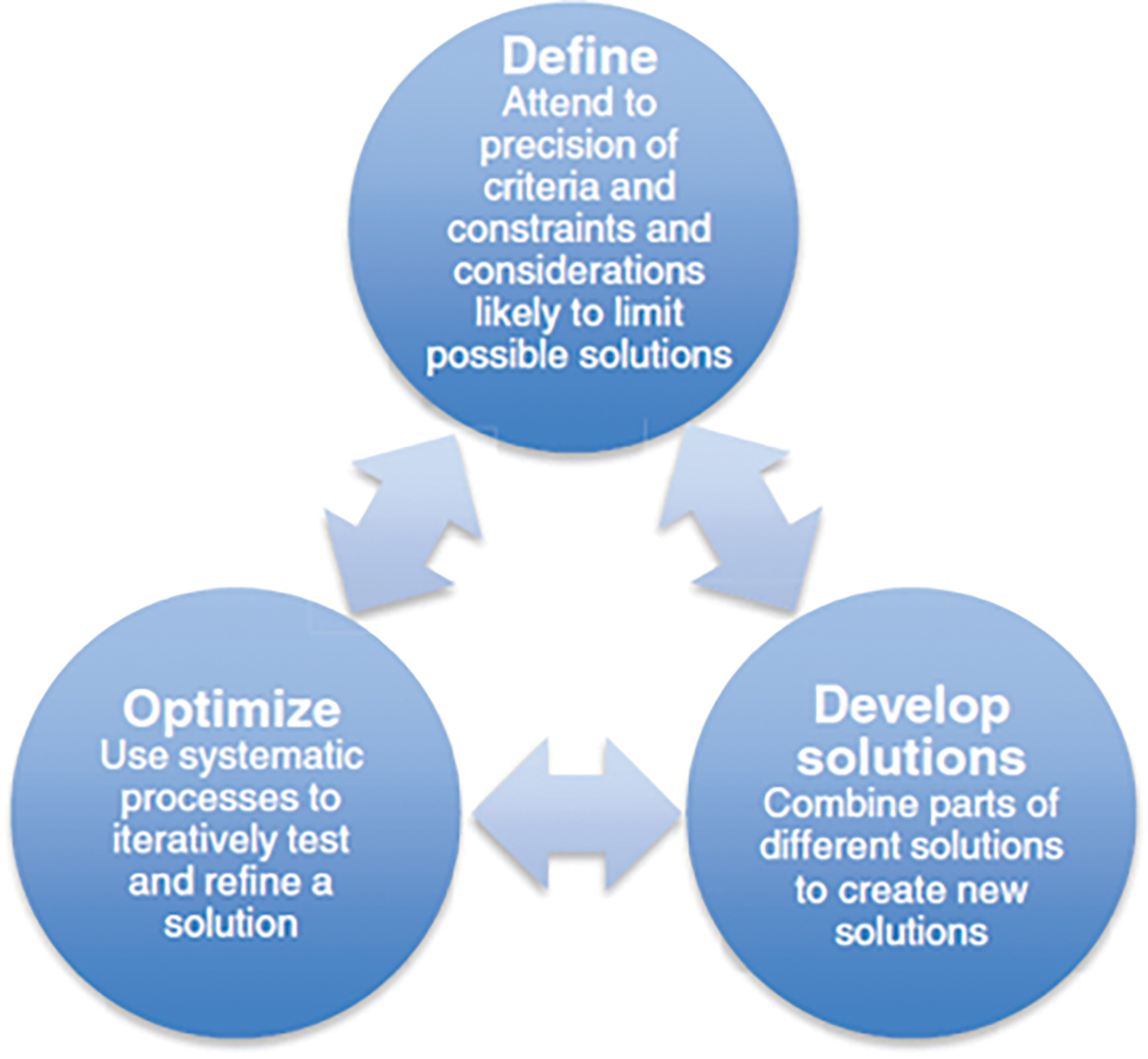
We defined the problem, but how would we gather evidence and synthesize it, what ideas did students already have to make improvements, how would they design and create possible solutions, what constraints did we have, and how would we test outcomes and determine which is most effective? We used these ideas as a springboard into our investigation. Together, we sketched out the stages of the design process: Define, Develop solutions, Optimize (NGSS APPENDIX I).
Define the problem: too many plastic water bottles come into our school and go into the trash daily.
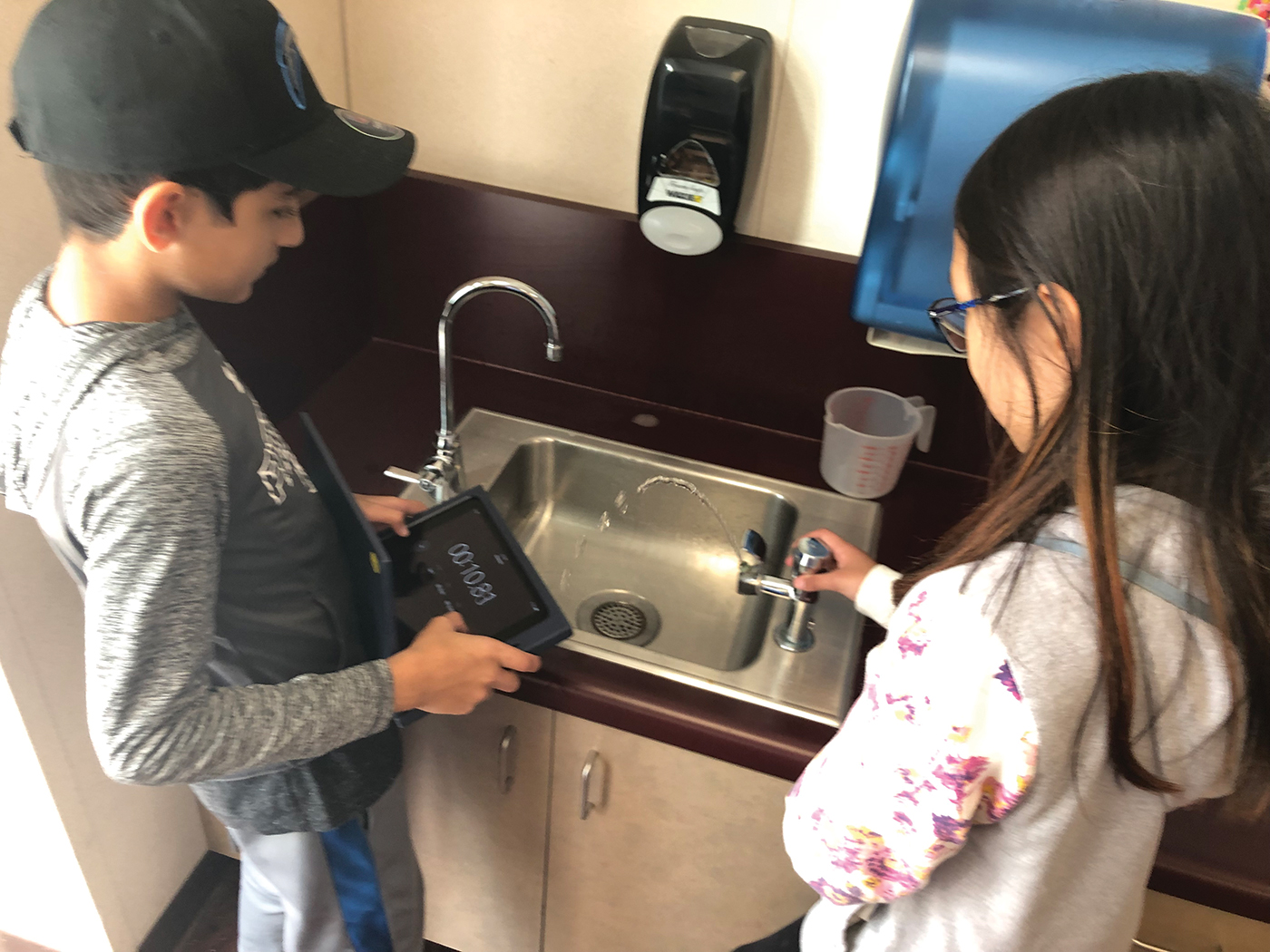
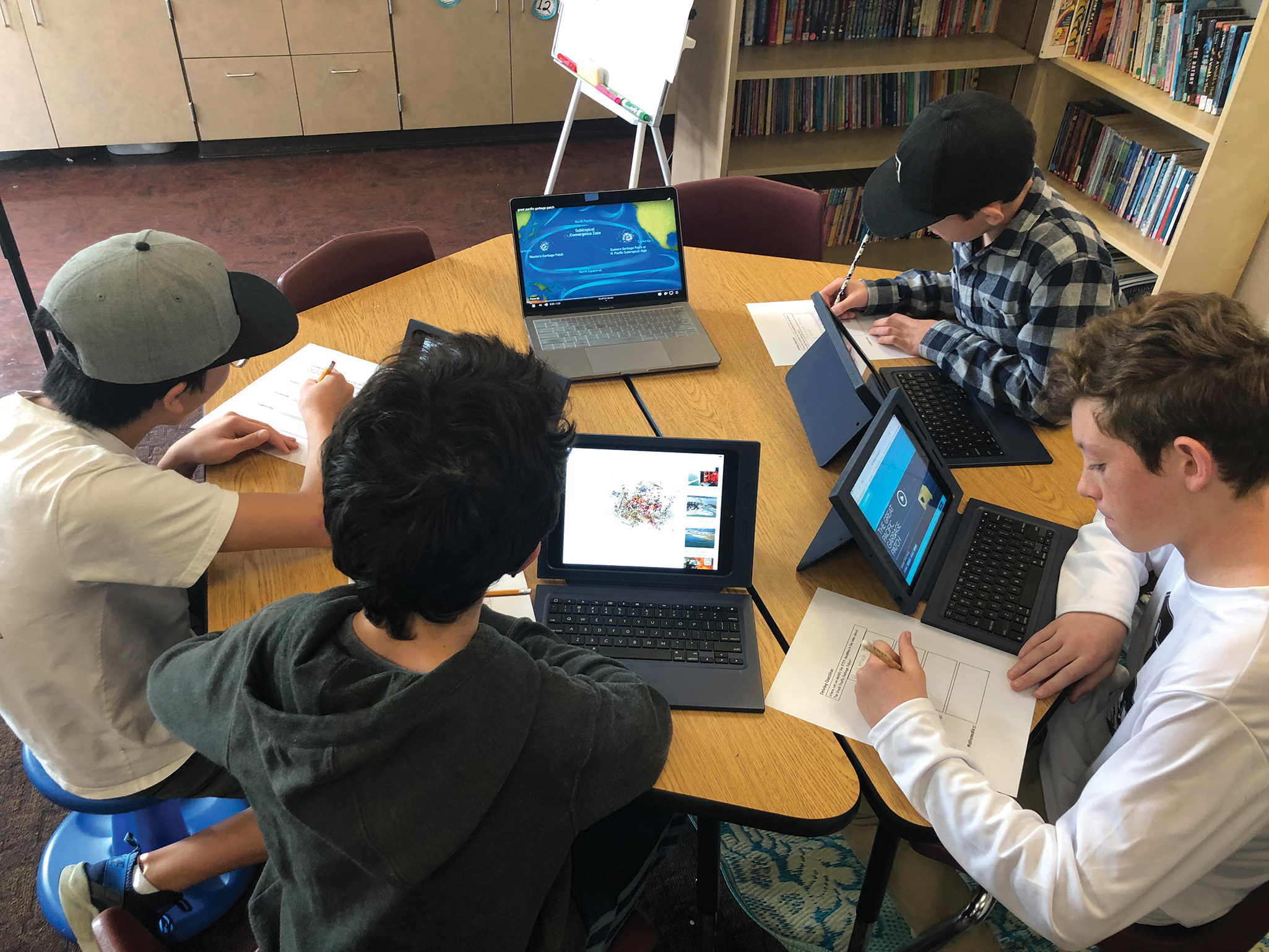
Develop Solutions: We wanted to reduce the number of plastic water bottles coming into our school and being used daily and increase the amount that are recycled instead of put in the trash.
Optimize: Help students understand the benefit of using reusable water bottles and find the best places to put recycling bins at school in order to increase recycling.
In the next week, different groups of students put their solutions into place and presented their findings to each other. We discussed how the scientist that was growing plants in our previous class discussion set up an investigation with a claim that sunlight would be a major factor in the growth of plants. She was investigating with one factor to confirm an outcome; whereas in our investigation, we were beginning with a problem that needed to be solved. This led into a discussion about evidence and how we would know which solution was successful. Their passion spread to our school community and other students truly embraced their efforts. Their understanding of the disciplines and how the engineering design process worked was a success and their continued interest led into a new investigation, each personalized to their own driving question.
Evaluating Students’ Understanding of STEM and a Proposed Solution
Not only does evaluation prove to be critical in teaching and learning, as it drives daily instruction, but it also allows teachers to truly determine their students’ level of mastery and how to meet them where they are, in order to take them to the next level.
Evaluation in this unit came in the form of individual/small-group projects. Utilizing the current theme of human impacts on the Earth, students applied their current understandings to create their own driving question, unpack it into the STEM disciplines as we had done together, and sketch out their investigation through the NGSS Engineering Design Process. I used the STEM template and the design process write up to assess students’ mastery of the learning goal (to be able to differentiate the four STEM disciplines) and NGSS Standard 5-ESS3. A rubric (see NSTA Connection) was used to track each student’s level of mastery.
Conclusion
This multi-week inquiry took students through lessons to unpack the four STEM disciplines, while engaging their desire to make positive changes for our Earth at a local, school-based level. It provided them with opportunities to observe the school, investigate the natural world, manage constraints, and act on driving questions that motivated them individually to promote positive change. STEM is becoming more prominent in schools across the world, making sure students understand the disciplines is the first step to having a successful STEM education program. Not only did this inquiry sequence open students’ eyes to the need for positive change, they shared their devotion to the Earth to the rest of the school, their families, friends, teammates, coaches, and more. An inner drive to become STEM Professionals and Earth Advocates was ignited!



